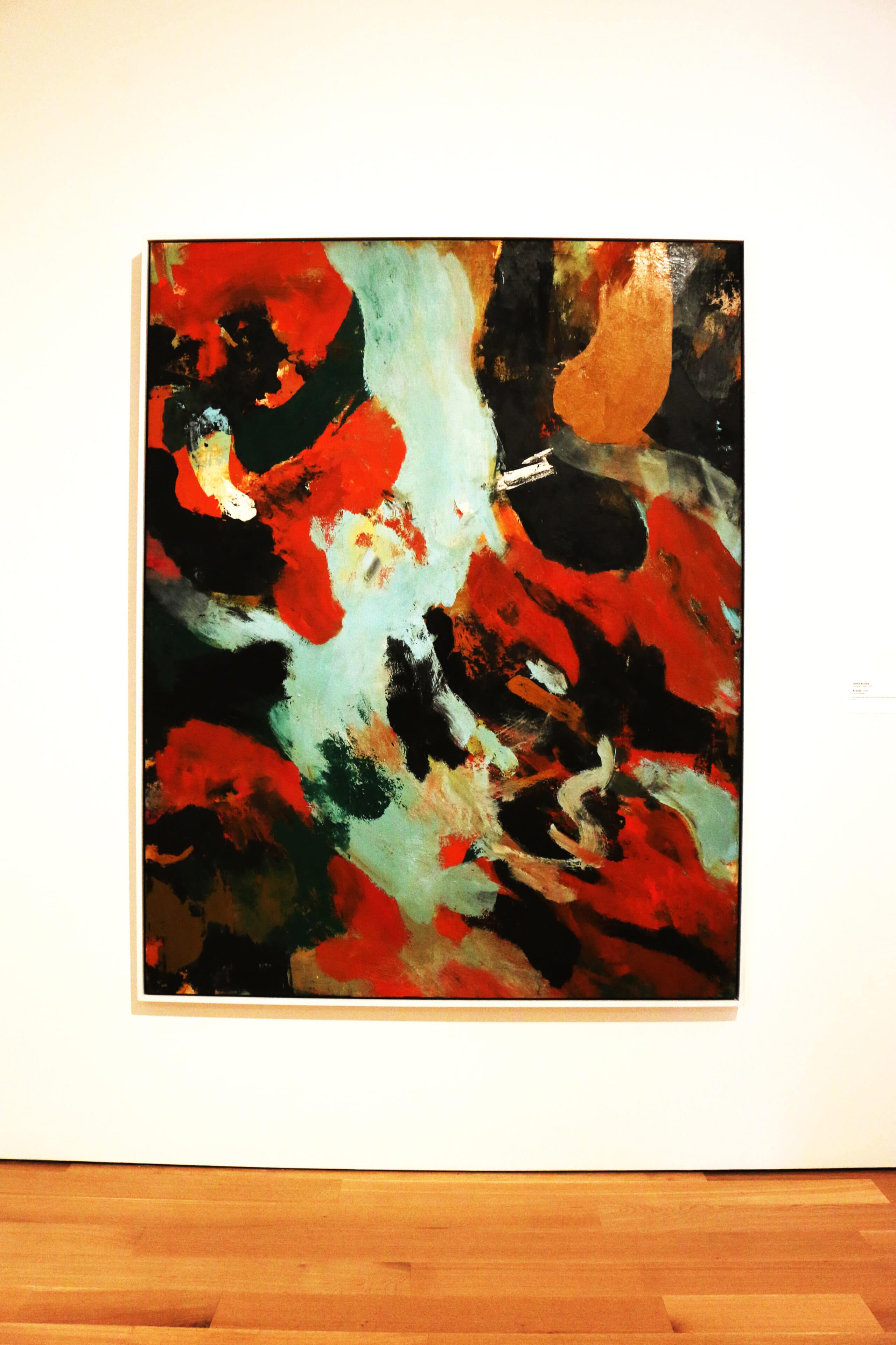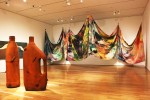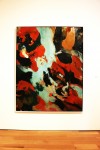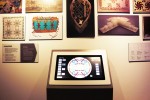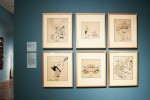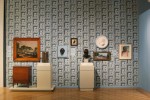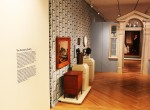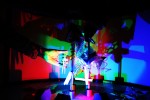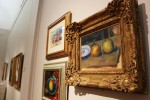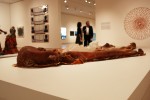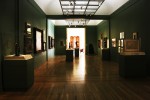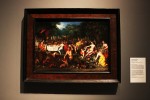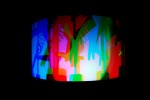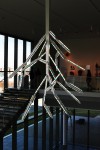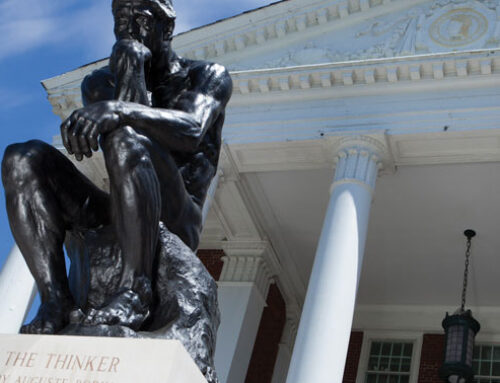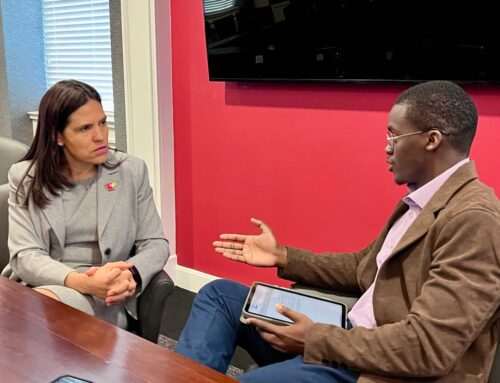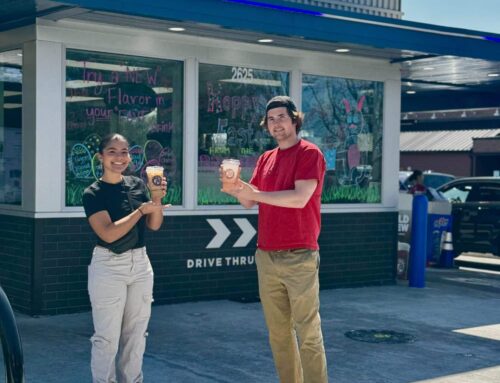By Sarah Rohleder —
When I arrived at U of L in 2013, the Speed Art Museum was a building on campus I never got to explore because it closed down for a three-year hiatus just after I got to campus. After the long wait, I started getting antsy for the highly-anticipated opening, as the Speed took its final shape and new art installations appeared outside the building and inside the three-story windows seemingly every week.
March 8, I got to venture through the Speed, camera in-hand, with my creative friend Jacob, whose dad’s art was featured in the Speed in the 90s. Upon first walking into the Speed, the first thing I noticed was how spacious the new building is. The enormity and white space offered breathing room for the pieces my eyes attempted to take in at once.
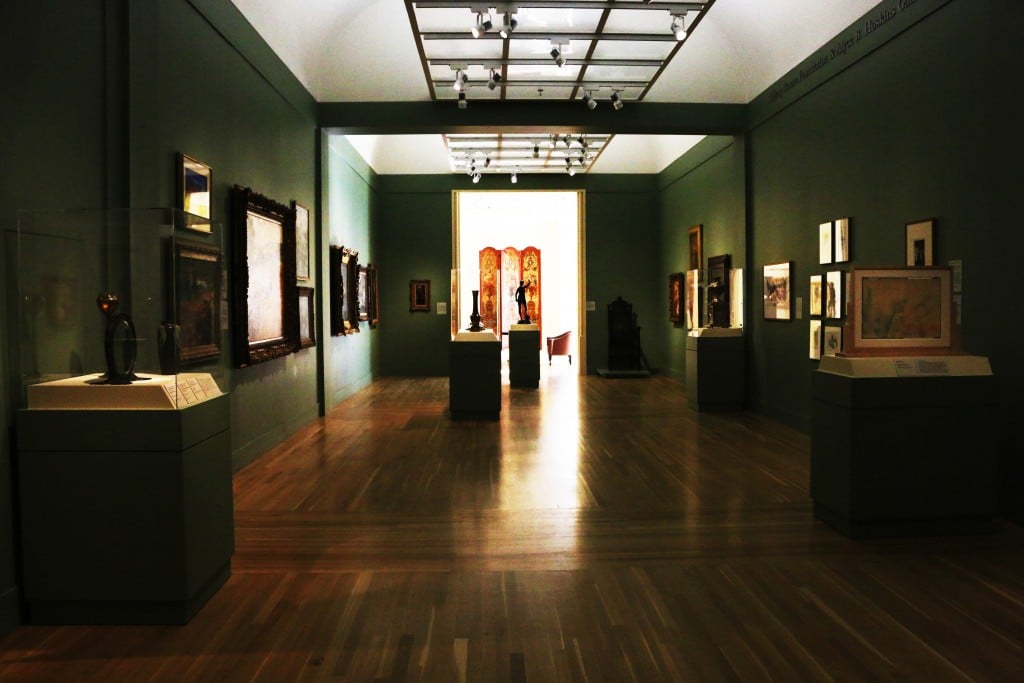
Photo by Sarah Rohleder
Those thousands of pieces fit within 220,000 square feet, spanning galleries from ancient cultures to contemporary works. The old Speed was respected for its time-honored collection, but the Speed’s current Chief Executive Officer, Ghislain d’Humières, secured relevance with an 18,000-square-foot contemporary art exhibit, to keep the museum alive and constantly updatable.
The 18,000 feet of space reserved for contemporary art is twice the size of the space allotted for the contemporary collection under future circumstances. Split into two floors, the top floor will hold rotating exhibits slated to change three times per year, beginning in September. The special exhibits are already planned for the next two years. D’Humières tasked Miranda Lash, Curator of Contemporary Art, with filling the doubled space in the meantime. The contemporary collection displayed a myriad of works, including a gallery of pieces considering mortality, film screening spaces and even a Lichtenstein, among other pieces.
“We decided not to have special exhibition for now, because we wanted to celebrate the Speed Art Museum collection, since it was away for three years,” d’Humières said, “so I turned around and gave the 9,000 square feet back to Miranda.”
D’Humières leaked the theme of the first special exhibit with a laugh: “Sneak peek–it’s an exhibition on sneakers!”
He also gave insight into a few other projects coming up, including the Art Park, which will exist on the grassy knoll around the building.
“The art park is a very important thing. In one month, we will have the first site-specific addition,” D’Humières said. “We are bringing national and international artists to Louisville to do site-specific commissions. It’s bringing an artist, known or unknown–in our case, they are all very famous–and asking them to look at the space, get inspired and create something. The best example is that chandelier in the atrium…It’s really inspired by the daylight morning in Hodgenville.”
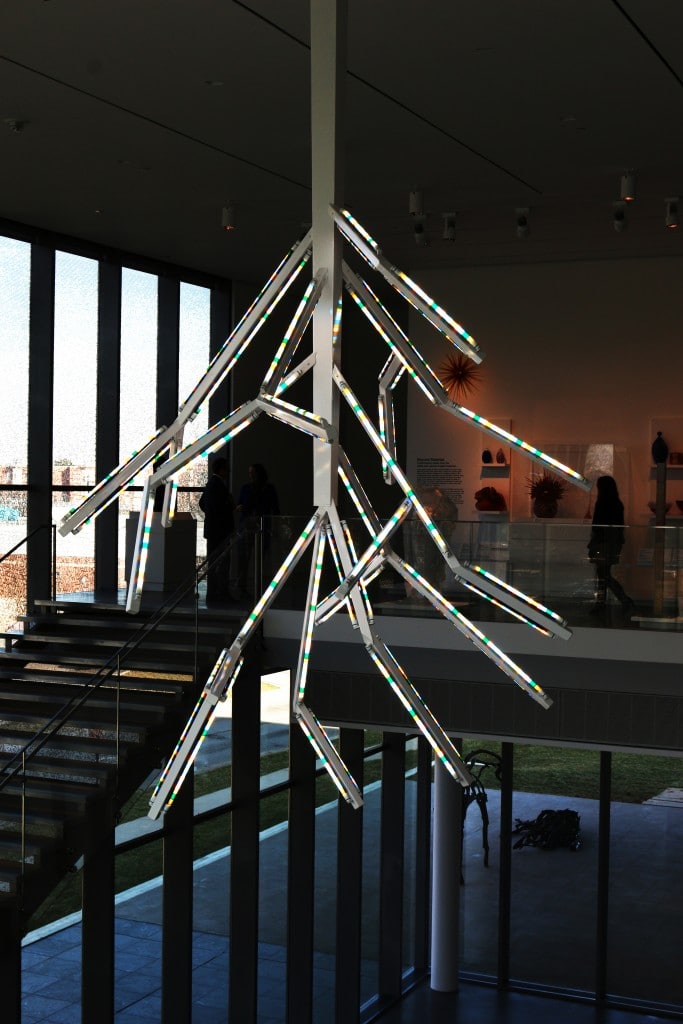
The chandelier d’Humières mentioned.
Photo by Sarah Rohleder
Every detail about the Speed–from the placement of each collection to the construction of each wall–exuded intentionality.
“In the lobby of the cinema, instead of having a wall, we opened two doors into the Kentucky gallery. So when people come to the movie at 8 p.m., the rest of the museum is closed, but they will see art from the Commonwealth of Kentucky,” D’Humières said. “One of the major responsibilities of the museum is to promote the culture of your own state. We have 5,600 square feet dedicated only to the culture of Kentucky from 300 years ago ‘til now.”
Both Jacob and I are born-and-raised Kentuckians, and the Kentucky collection awed us. The art was mostly folk, but included furniture, tapestry, visual art and even instrument. According to the collection curator, the Kentucky collection came off the hands of only a few collectors, so it does not showcase the entire state.
Kentuckian art is intertwined elsewhere in the museum, including in a photography exhibit featuring photos of Appalachian residents and a shot of famous Kentucky poet Wendell Berry.
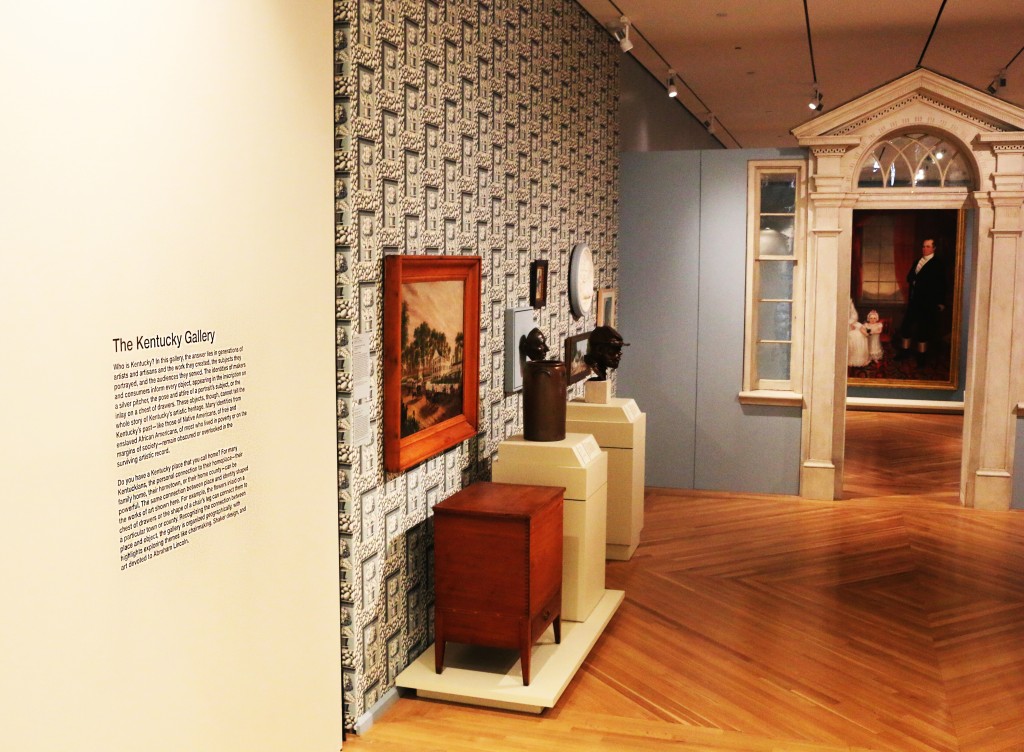
The entryway into the Kentucky Gallery
photo by Sarah Rohleder
D’Humières and curator Kim Spence made a bold decision in the placement of the Native American art collection as well.
“You remember the gallery used to be in the basement,” d’Humières said of the old Speed. “We’ve now made the really political decision to raise Native American to European and American Art (floor) because Native Americans were here before all of us.”
The larger collection surrounding the Native American gallery, the European and American Art collection, offered up-close views of pieces from artists whose work I had only previously seen in textbooks. This collection piqued my interest in humanities with works by Cézanne, Monet, Cassatt, Courbet and Degas.
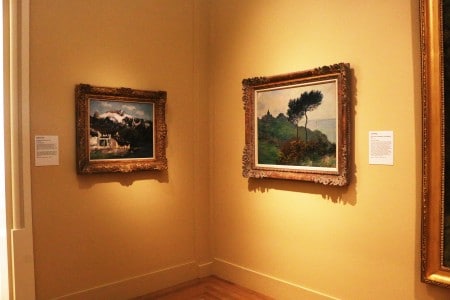
In an unassuming corner, a Courbet hangs side-by-side with a Monet.
Photo by Sarah Rohleder

A Cézanne hangs among other still life paintings.
photo by Sarah Rohleder
The ArtSparks station in the basement of the Speed also impressed me. When Jacob and I walked in, I timidly asked if the space was for anyone or just for kids, hoping I could play with the hands-on goodies surrounding us. Chief Engagement Officer Ann Taylor Brittingham welcomed me into the space and gave us the green light to explore.
The space was separated into three concepts: visual, communicative and kinesthetic. Each concept contained several activities, allowing visitors to hone in on certain effects of art. The visual section allowed guests to connect their perceptions of pieces of art with meaning. The communicative section fostered conversation about works of art. The kinesthetic section allowed guests to create art of their own, toying with artistic elements such as color and symmetry.
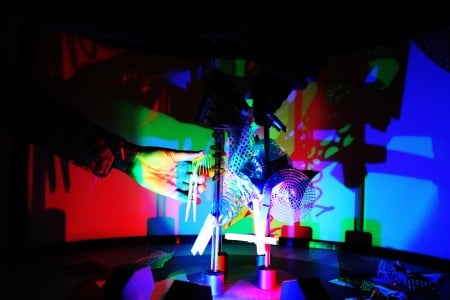
This piece allowed users to clothespin objects to metal rods that rotated in colored lights against a concave screen.
Photo by Sarah Rohleder
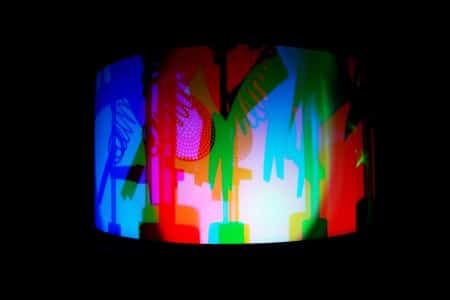
Shadowplay on the opposite side of the screen.
photo by Sarah Rohleder
Allison Feeny of San Francisco’s Exploratorium helped design the concepts for ArtSparks.
“Ann had come to us with a really innovative idea about creating a really interactive, multi-generational space that built confidence around talking about art,” Feeny said. “That’s the Exploratorium’s specialty: we specialize in interactive and inquiry-based exhibits that are very open-ended and have a lot of access points.”
Jacob created shadow art with multicolored lights while I wrote seven-word stories from a piece of visual art. We wrote our names in black light that disappeared as quickly as we wrote. The developers realized everyone can be creative with the right cultivation, whether through conversation, the extra boost of visual perspective or supporting the individual’s creative capacity.
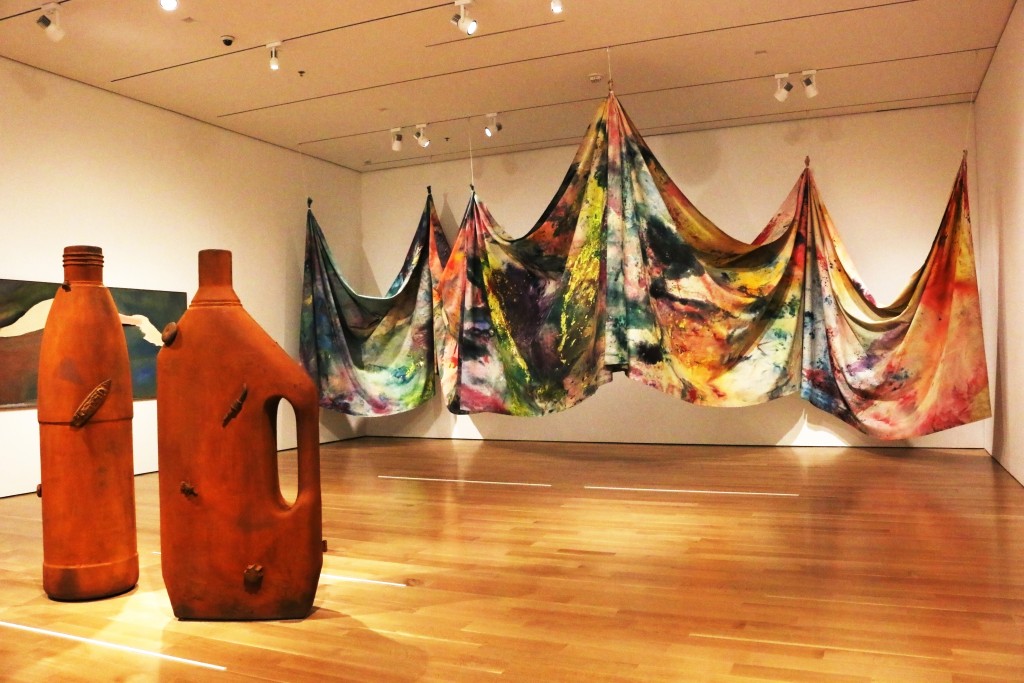
photo by Sarah Rohleder
“I really believe a museum is a hub of creativity and we are a hub of creativity,” d’Humières said, in his introduction to us. “It’s a neutral place where you can have dialogue. We are not religion, we are not an educational place, we are not a political place, we are neutral. And we try to really bring art and dialogue–and sometimes controversial conversation–but that’s the job we have to do, otherwise, how do we get the next generation to be global, to be objective, and to have an understanding of the rest of the world?”
The Speed will be open this weekend for 29 hours–which was intended to be 30, before the team realized daylight savings time begins–at no cost, with performances and fun events throughout the kick-off Non-Stop Party.
Regularly, the Speed Art Museum will be open Tuesday-Saturday from 10 a.m. to 5 p.m. at a student rate of $8, or on Sundays from noon to 5 p.m. for free, thanks for a contribution from Brown-Forman that secures free admission on “Owsley Sundays,” as the Speed calls them, for the next five years.
Photos by Sarah Rohleder / The Louisville Cardinal
- photo by Sarah Rohleder
- photo by Sarah Rohleder
- A work in the contemporary collection photo by Sarah Rohleder
- In this ArtSparks station, users could play with mirror effects, fingerpainting kaleidoscope-like drawings on the screen with inspiration from symmetrical works of art. photo by Sarah Rohleder
- This ArtSparks station allows guests to play with color through light, understanding how colors blend. photo by Sarah Rohleder
- Editorial works in the Kentucky collection photo by Sarah Rohleder
- the entryway of the Kentucky collection photo by Sarah Rohleder
- The entryway into the Kentucky collection photo by Sarah Rohleder
- This piece allowed users to clothespin objects to metal rods that rotated in colored lights against a concave screen. Photo by Sarah Rohleder
- In an unassuming corner, a Courbet hands side-by-side with a Monet. Photo by Sarah Rohleder
- A Cézanne hangs among other still life paintings. photo by Sarah Rohleder
- In the contemporary art gallery, a collection of works from all over the world challenge ideas of mortality, including with this piece, made from latex and glass. photo by Sarah Rohleder
- Photo by Sarah Rohleder
- This work was made out of shoestrings. Photo by Sarah Rohleder
- photo by Sarah Rohleder
- A Renaissance work by Sarah Rohleder
- photo by Sarah Rohleder
- In this ArtSparks station, guests can sort through a stack of prints to place them in series of five and categorizing them with a title on a chalkboard. photo by Sarah Rohleder
- In another ArtSparks station, guests can write on a wall with blacklight. photo by Sarah Rohleder
- Shadowplay on the opposite side of the screen. photo by Sarah Rohleder
- photo by Sarah Rohleder
- a bust challenging unnatural beauty standards photo by Sarah Rohleder
- The chandelier d’Humières mentioned. Photo by Sarah Rohleder

